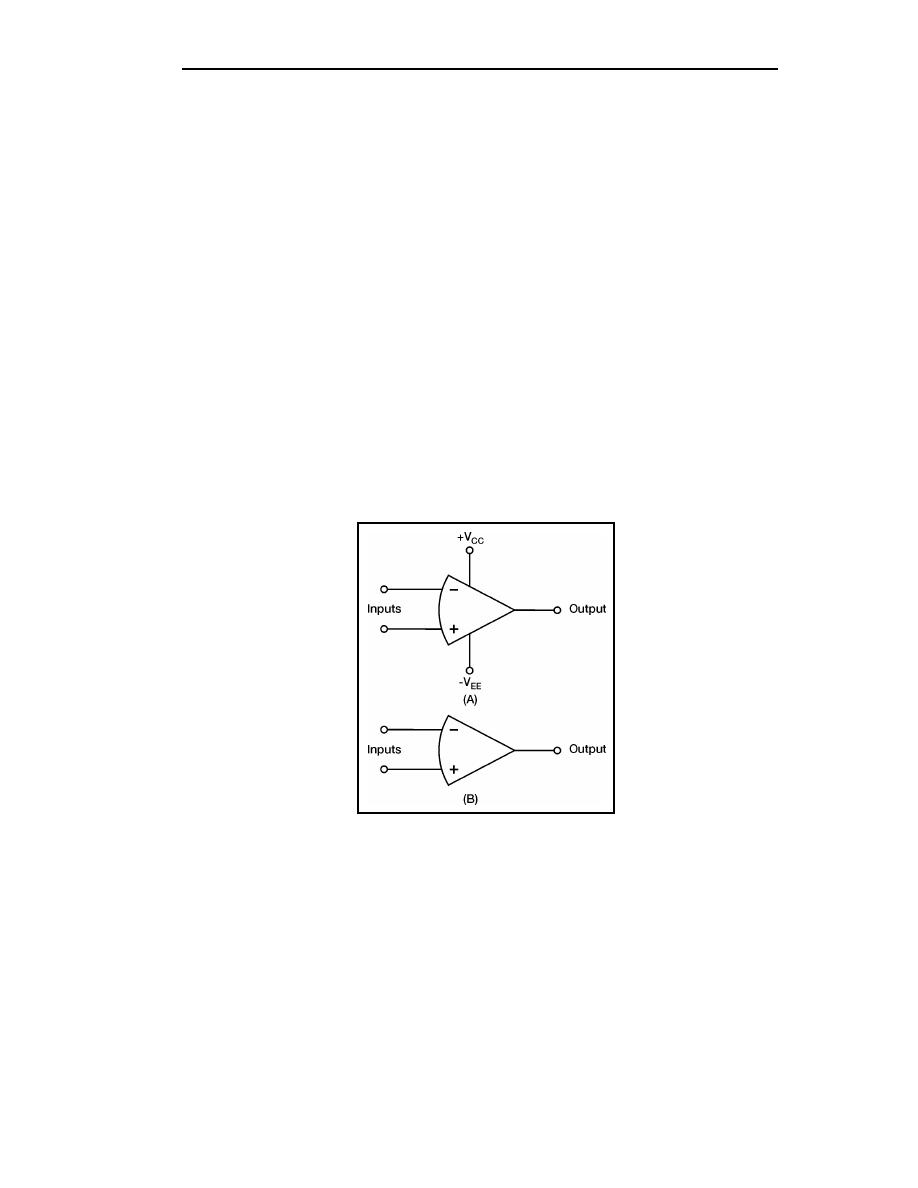
TC 9-62
an inexpensive and readily available "building block" for many devices. In fact, an
operational amplifier in IC form is no more expensive than a good transistor.
CHARACTERISTICS OF AN OPERATIONAL AMPLIFIER
7-47. Figure 7-10 shows the schematic symbols for an operational amplifier. View (A)
shows the power supply requirements and view (B) shows only the input and output
terminals. An operational amplifier is a special type of high-gain, DC amplifier. To be
classified as an operational amplifier, the circuit must have certain characteristics. The
three most important characteristics of an operational amplifier are:
Very high gain.
Very high input impedance.
Very low output impedance.
7-48. Since no single amplifier stage can provide all these characteristics well enough to
be considered an operational amplifier, various amplifier stages are connected together.
The total circuit made up of these individual stages is called an operational amplifier. This
circuit (the operational amplifier) can be made up of individual components (such as
transistors, resistors, capacitors, and so forth). However, the most common form of the
operational amplifier is an IC. The IC (chip) will contain the various stages of the
operational amplifier and can be treated and used as if it were a single stage.
Figure 7-10. Schematic Symbols of an Operational Amplifier
BLOCK DIAGRAM OF AN OPERATIONAL AMPLIFIER
7-49. Figure 7-11 is a block diagram of an operational amplifier. Notice that there are
three stages (differential amplifier, voltage amplifier, and output amplifier) within the
operational amplifier.
7-50. The first stage (also known as the input stage) is a differential amplifier. As an
input stage, the differential amplifier provides differential inputs and a frequency response
down to DC. Special techniques are used to provide the high input impedance necessary
for the operational amplifier.
7-14
TC 9-62
23 June 2005



 Previous Page
Previous Page
